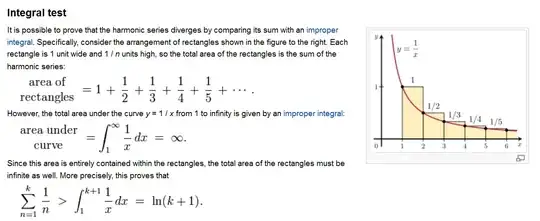The real part will not converge because of the $\frac 1n$ equivalence for large $n$ (as shown by others) but the imaginary part admits following limit :
$$\tag{1} \sum_{n=0}^\infty \Im\left(\frac 1{i-n}\right)=-\frac {1+\pi\coth(\pi)}2=-\sum_{n=0}^\infty \frac 1{1+n^2}$$
since $\ \displaystyle\Im\left(\frac 1{i-n}\right)=\frac 1{2i}\left(\frac 1{i-n}-\frac 1{-i-n}\right)=-\frac 1{1+n^2}\ $
and using the classical series (see for example here) for $\cot(\pi z)$ :
$$\tag{2}\pi\ \cot(\pi z)=\frac 1z +\sum_{n=1}^\infty \frac {2z}{z^2-n^2}$$
that we will rewrite as (setting $\ z:=i\,s\ $ and using $\,\coth(s)=i\,\cot(i\,s)$) :
$$\tag{3}\pi\ \coth(\pi\, s)=i(\pi\,\cot(\pi is))=i\left(-\frac is +\sum_{n=1}^\infty \frac {2is}{-s^2-n^2}\right)=\frac 1s +\sum_{n=1}^\infty \frac {2s}{s^2+n^2}$$
Setting $s:=1$ and adding the $n=0$ term should give us $(1)$.
Concerning the finite sum you considered :
$$\sum_{n=1}^k \frac 1n >\int_1^{k+1}\frac {dx}{\ln(x)}=\ln(k+1)$$
it provides in fact a proof that the harmonic sum grows without bounds (remember that you want the limit as $k\to \infty$ i.e. $+\infty$ here).
You may modify this (for example using $\left|\frac 1{i-n}\right|>\frac 1n$) to prove that your sum is divergent but won't get a bounded value like $\ln(i)$.
Hoping this clarified things,
